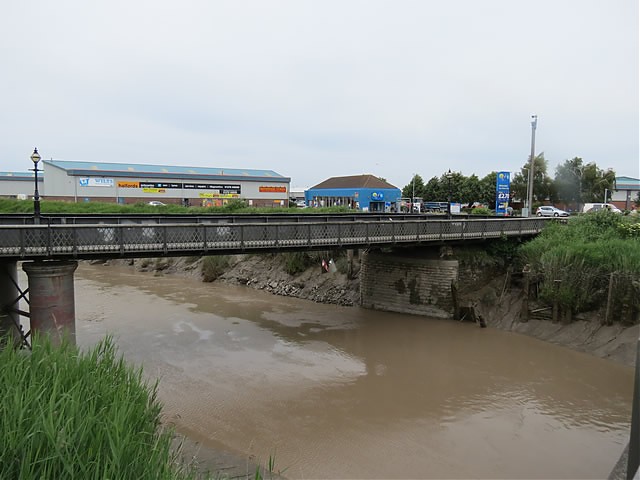The Black Bridge
|
|
||||
 |
||||
| Bridge Name: | The Black Bridge | |||
| No.: | 42 | |||
| Location: | Bridgwater | |||
| Build Date: | 1871 | |||
| Engineer: | Francis Fox and built by Warburton Brothers of Bristol | |||
|
|
||||
| Description: | ||||
| Wrought iron plate girder telescopic rail bridge built as part of rail link from the main line to Bridgwater Dock. The traverser section was demolished by british Rail in 1974. The bridge was converted to use as a footbridge in 1982 and the timber deck replaced by concrete. Scheduled building.1
North of the town bridge, the telescopic or Black Bridge was built in 1871 to take a railway across the river. It was steam-driven, retracting to allow shipping to pass upstream. The bridge, temporarily immobilized in 1942, was last opened in 1957, and from 1983 became part of a new road network.2 Telescopic rail bridge built in 1871 as part of rail link from the main line to Bridgwater Dock. The line was laid as far as the E bank in 1867 on the line of an earlier tramway of 1845. The bridge was operated by a steam engine which moved an eastern section of the bridge northwards across a traverser pit to leave space for the central bridge section to roll backwards on two sections of rollers, leaving a gap for shipping. The western portion of the bridge was immovable. The bridge was replaced in mild steel in about 1906. Bridge scheduled in 1974.The bridge was converted to use as a footbridge in 1982 with many parts of the telescopic bridge mechanism placed in the filled-in traverser pit. Others were removed to the Great Western Railway Museum at Didcot.During conversion to a road bridge, members of the Somerset Industrial Archaeology Society examined the traverser pit at the eastern end. The rails on which the bridge travelled were measured and photographed together with a selection of iron artefacts from the ballast box of the retracting section. These items included broken castings and miscellaneous wheels which were placed there in 1907 to provide counter weight.The bridge is in good repair. The area at the eastern end which contained the engine house is now completely obscure beneath recent pavements.3 |
||||
| References: | 1.Civil Engineering Heritage by R.A.Otter 2. British History Online compid=18640 3. Somerset HER Ref.11837 |
|||
